Submitted Review
‘…astounding talent emanating out of the aged care programs and the joyous roar of thread, earth and spear.’
‘Desert Mob 30’
Nestled at the foothills of the undulating red-spined range, Araluen is a nest for Central Australia’s best.
The vast surrounding seabed still carries living languages from the four directions on its breath and wave after wave of creativity breaks through on the platform for innovation that Desert Mob (DM) provides.
A drama of colour and story plays out on these walls -performing feats of diplomacy and invention. Over the past 30 years we’ve seen the initial multifarious riot of craft usurped by the prominence of painting, dominance of Western Desert art, annexing of walls by women artists, the rise of the APY lands, astounding talent emanating out of the aged care programs and the joyous roar of thread, earth and spear.
Desert Mob weekend invariably marks a break out of the desert chill to the heat of days to come. Summer’s here, and it’s a year of anniversaries: approaching Namitjira’s 120 th birth year, 50 years since Geoff Bardon was in Papunya, and now 30 years of Desert Mob, all testifying to the flourishing continuous culture birthed here so many generations back. Furthermore, DM charts the rise of the art centre model – early histories entwine, Ernabella, Maruku, and Hermannsburg to name but a few and this year the first Aboriginal owned art centre in Utopia makes its debut.
DM has witnessed the maturing of the industry as well as the artistry. There is an enormous breadth of art from 32 centres, represented by 241 artworks by 253 artists, alongside a retrospective exhibition acknowledging many artists who have paved the way.
Heading into Gallery 3 Tjala Arts is aflame with fiery currents of land formation, waterways and dune but it’s their works on paper that index spontaneity (fig. 1). In the black and white ink of Christy Young and the lively experimental pigmented ink of Mary Katatjuku Pan marks jostle and writhe as skin of country, sand goanna and thorny devil.
On the middle wall Ampilatwatja has jumped up out of its uniform small size with a monumental work by Sandra Pula Teece. It all but smells of the dainty desert seed grasses capturing their grace and last-light illumination. Nearby, a superb duo by Adrian Jangala Robertson – a masterful painter whose rich tonal blends on canvas surge up in planes of light and shadow from the desert scumbling, are a standout amongst the eclectic array of works from Bindi.
Down the centre there’s a distinctively subdued pallet on the Hermannsburg pots, the white earthenware ending a 29 year rule of terracotta. The pots, together with the Iltja Ntjarra watercolours on embossed paper, offset the loudest work in the house. Nyinkka’s Tennant Creek Brio is chorusing trouble and transcendental might as it commands the most prominent wall in the gallery often earmarked for APY. They are heavy metal to the coral harmonies emanating from surroundings walls. (fig. 2).
While in the adjoining Sitzler Gallery Maruku’s pared back display takes us out on sand with dry burnt out branches reaching up to sky. Cynthia Burke’s minimal dotting draws attention to ant-like trails winding elegantly up its centre, while Lena Dawson’s circular walka (design) emphasises portals of country. A spray of raw spears sit above a wide open piti by Erica Ikungka Shorty with the Cooley duo’s relief-etched water snake taking flight. (fig. 3).
Towards the back of the Centre the Namatjira Gallery is dedicated to Araluen’s collections alone and this year showcases a retrospective selection of exceptional works from DM’s decades. In Gallery 1 the consistency of scale in the art centres’ presentations makes for a powerful uniformity, but it’s the giant collaboratives by the Grant brothers and Dibbegan and Simms from the Spinifex Arts Project that takes you flying over country and leaves you mesmerised. Lennard Walker’s Kulyuru casts a particularly hypnotic spell. (fig. 4).
This year’s feature installation by Tjanpi Desert Weavers utilises found-metal skeletons of burnt-out car seats as blueprints. These serve to create the architecture for each individual piece accentuating the works corporeality. Carefully stitched pastel raffia also lends a tonal read all about shapes – no decorative colourful signatures here but an accomplished aesthetic smartly paired next to Timo Hogan’s work. A new progression for these women, they leave narrative behind as the constituents of making dominate – line and form, negative and positive spaces prevail, letting the hand-dyed tones of thread and grass echo the earthy tones of Hogan’s salt lake – a yawn of sky over salt amplified in the woven vessel mouths speaking space and fragments of trace. (fig. 5).
Other notable glints include the performative kinetics of Yarrenyty Arltere Artists which delight with their avian acrobatics (fig. 6) and Ninuku’s development of their partnership with Jam Factory glass workshop that continues to produce impressive blown glass works. (fig. 7).
All in all Desert Mob’s unique charisma emanates grassroots community with its presentation of recent work representing the pulse of desert art now. Drawing hundreds of people into town – senior and emerging artists travel in from all over the region to celebrate their event mingling with interstate visitors, arts workers and industry buffs at the eight events that have grown around the DM hub. It is a powerful coming together where all pay homage to a creative phenomenon on unceded country that always was always will be.
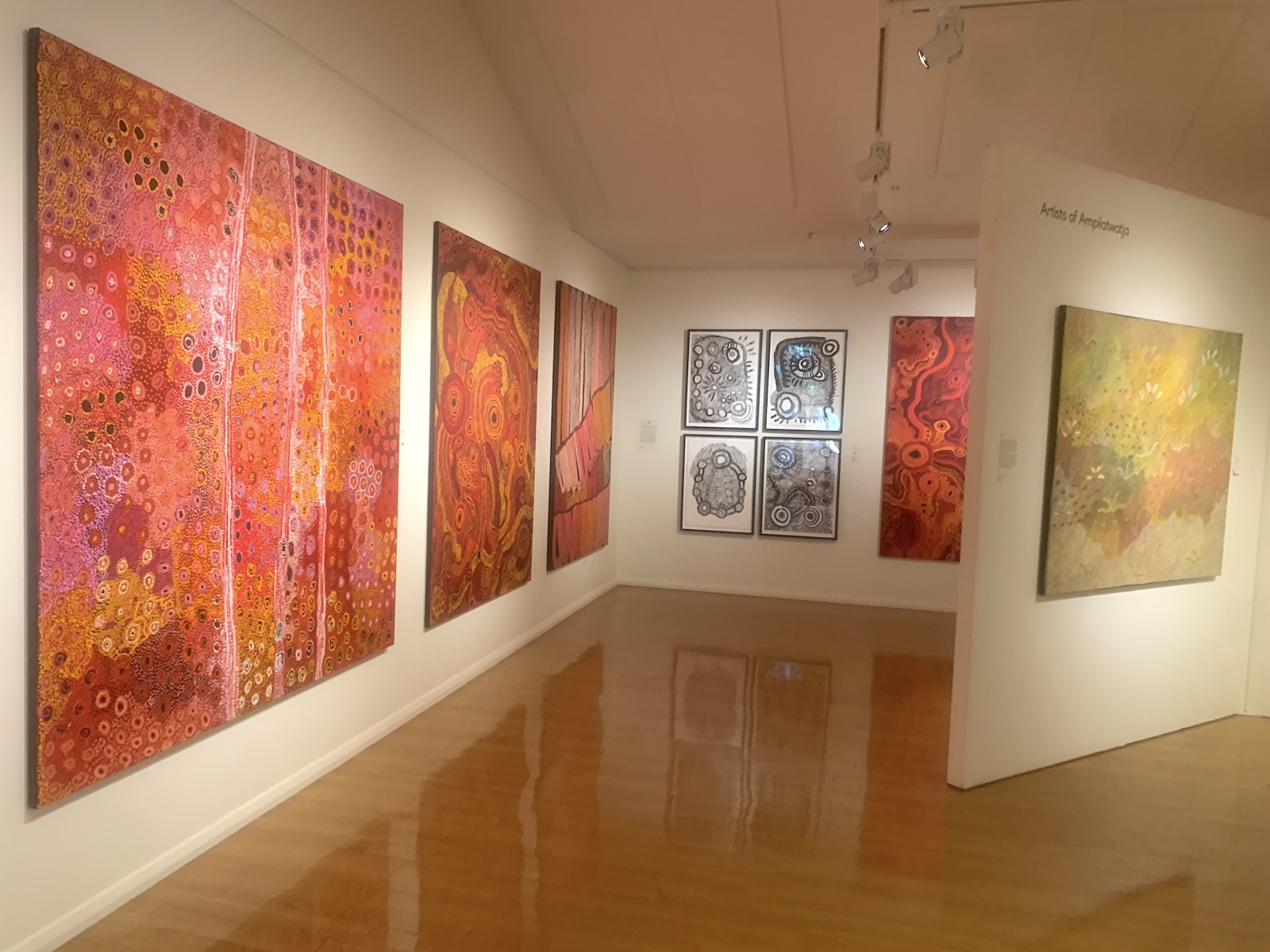
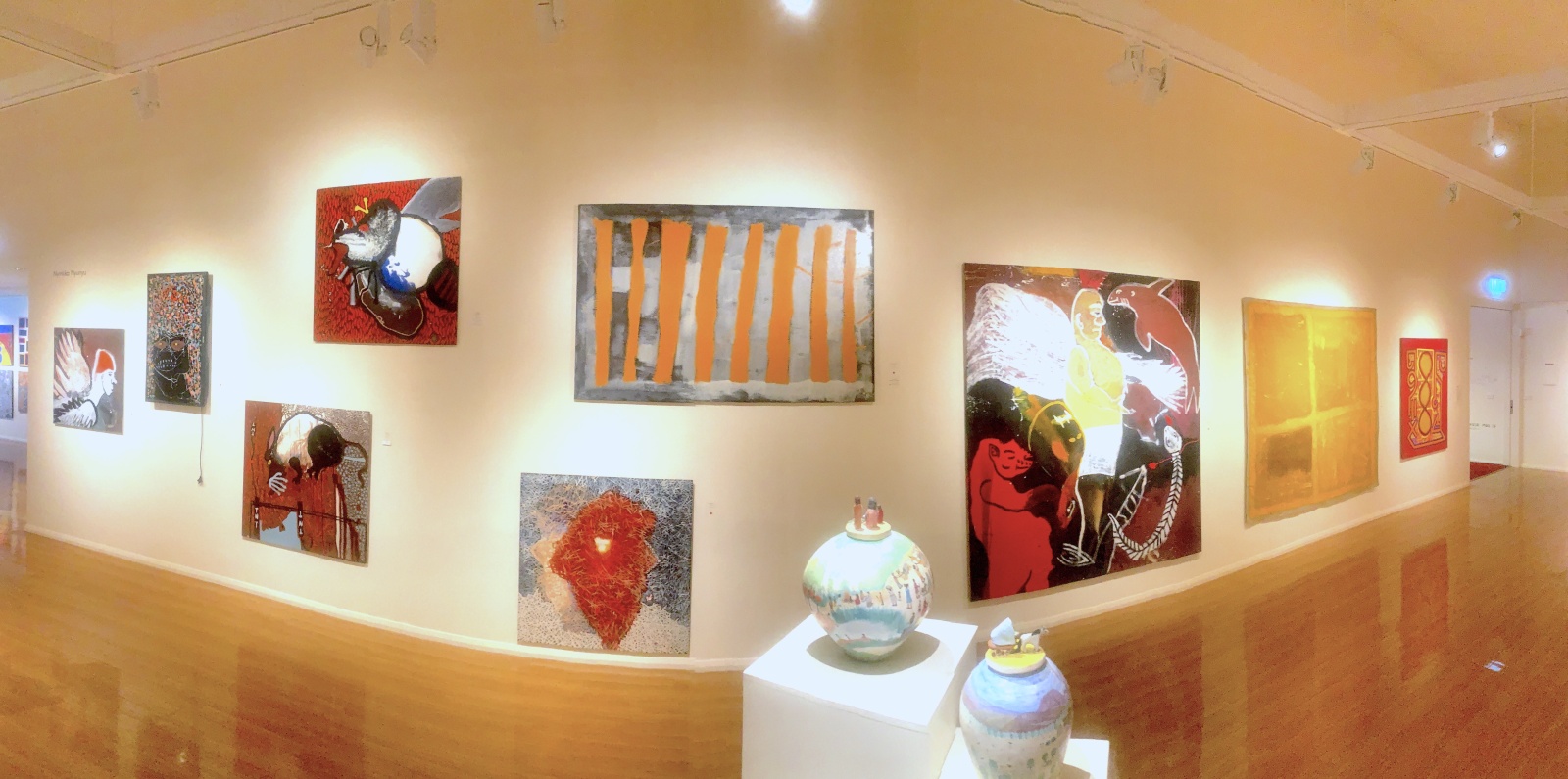
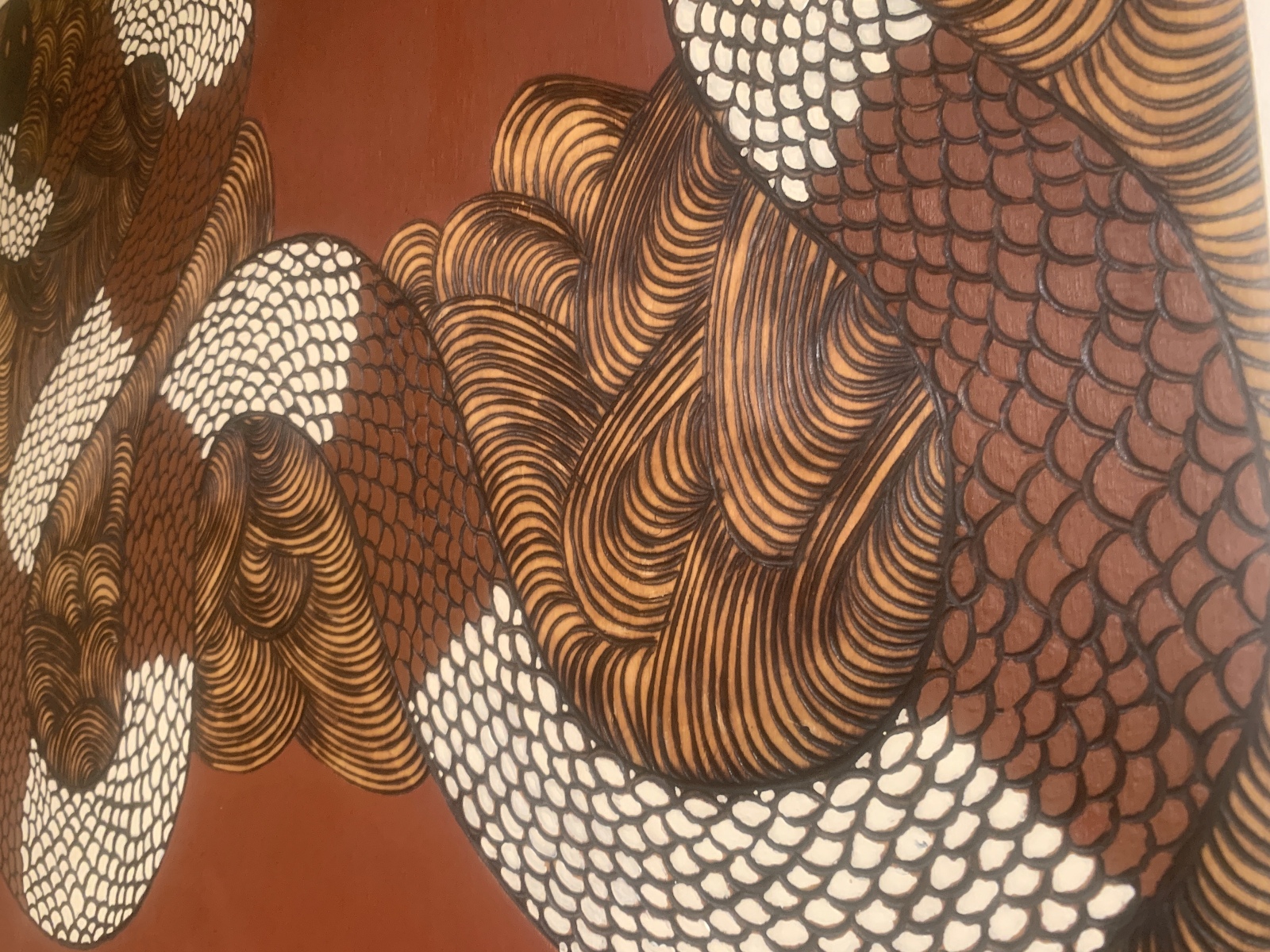
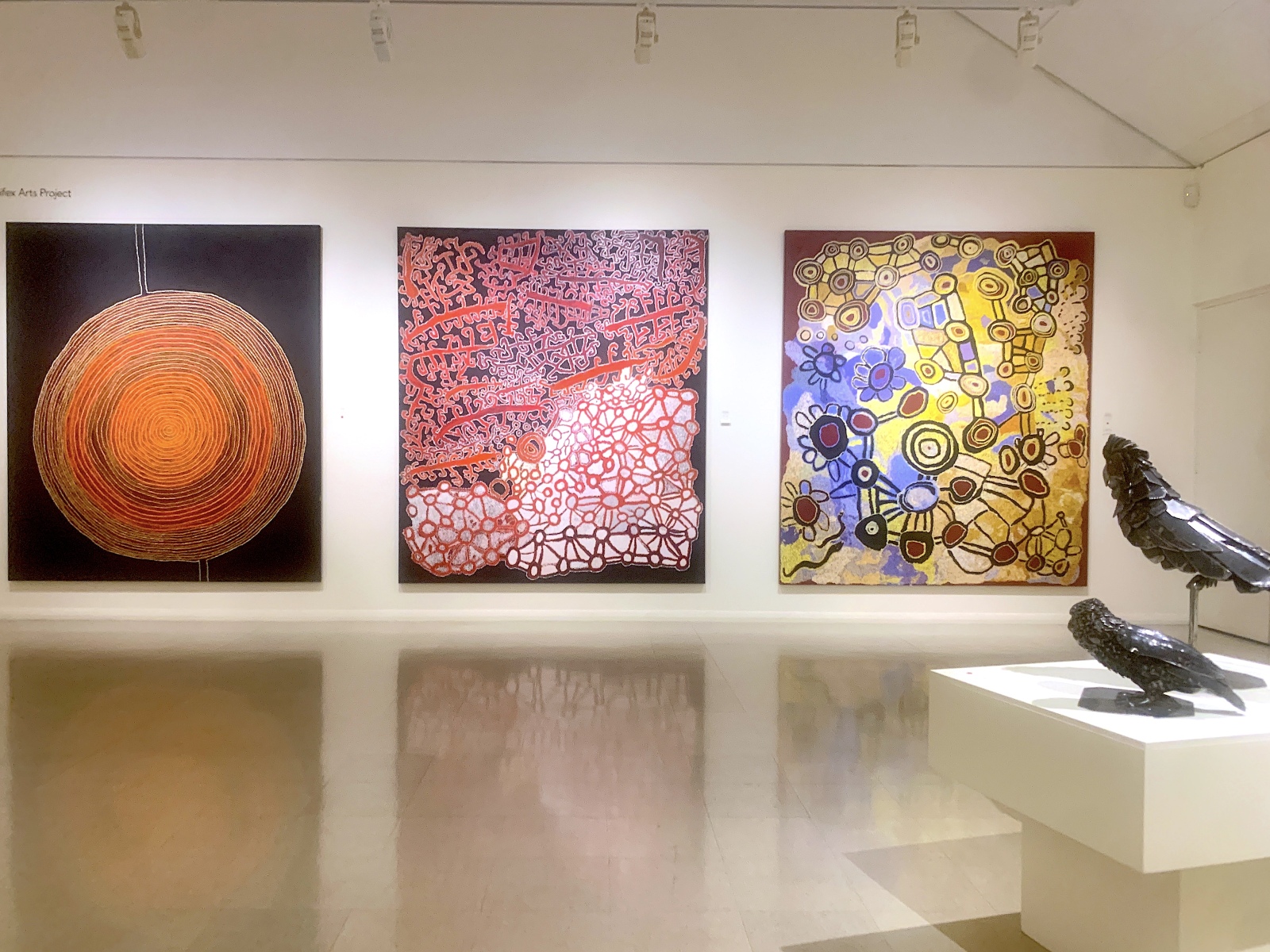
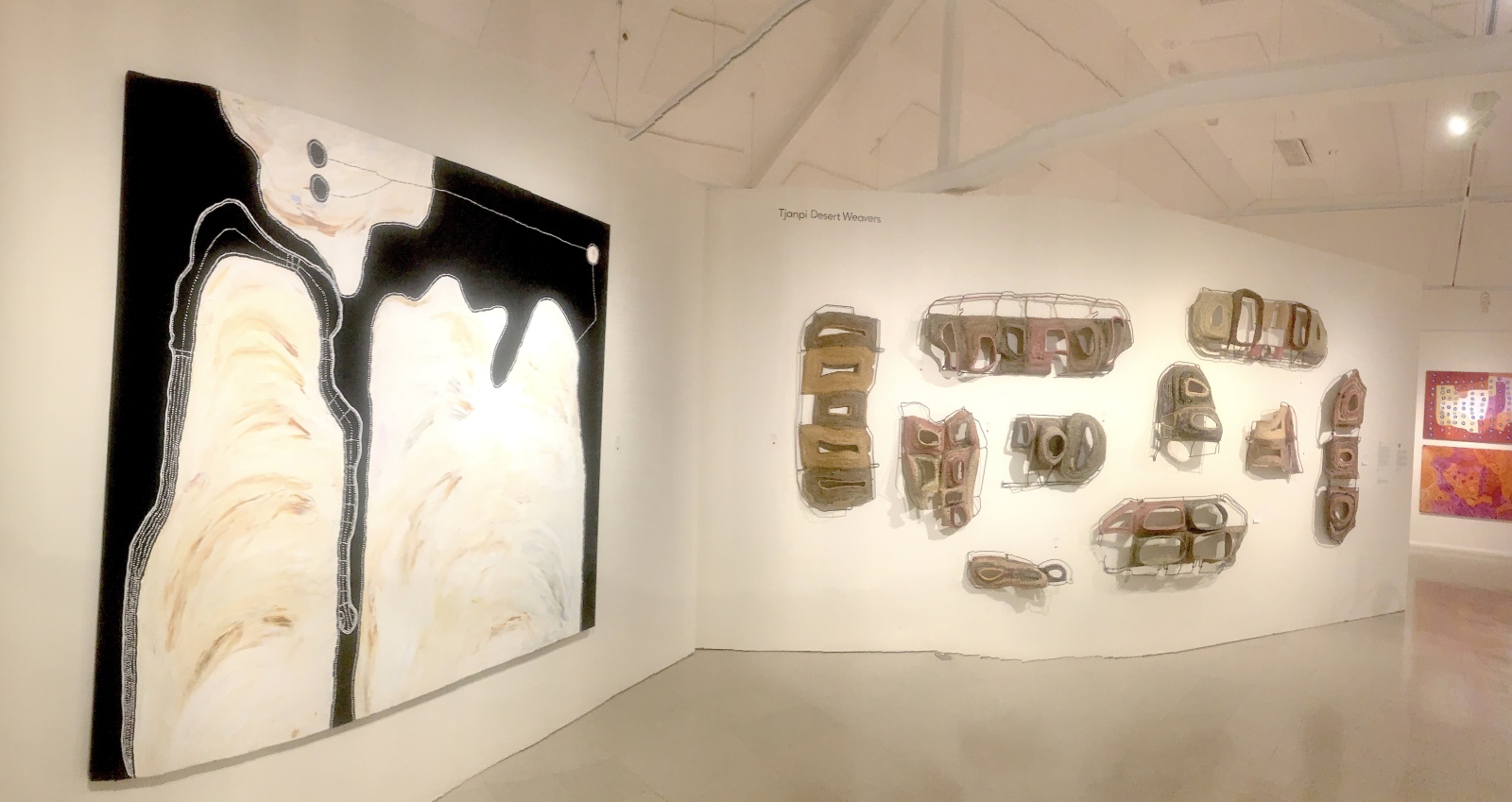
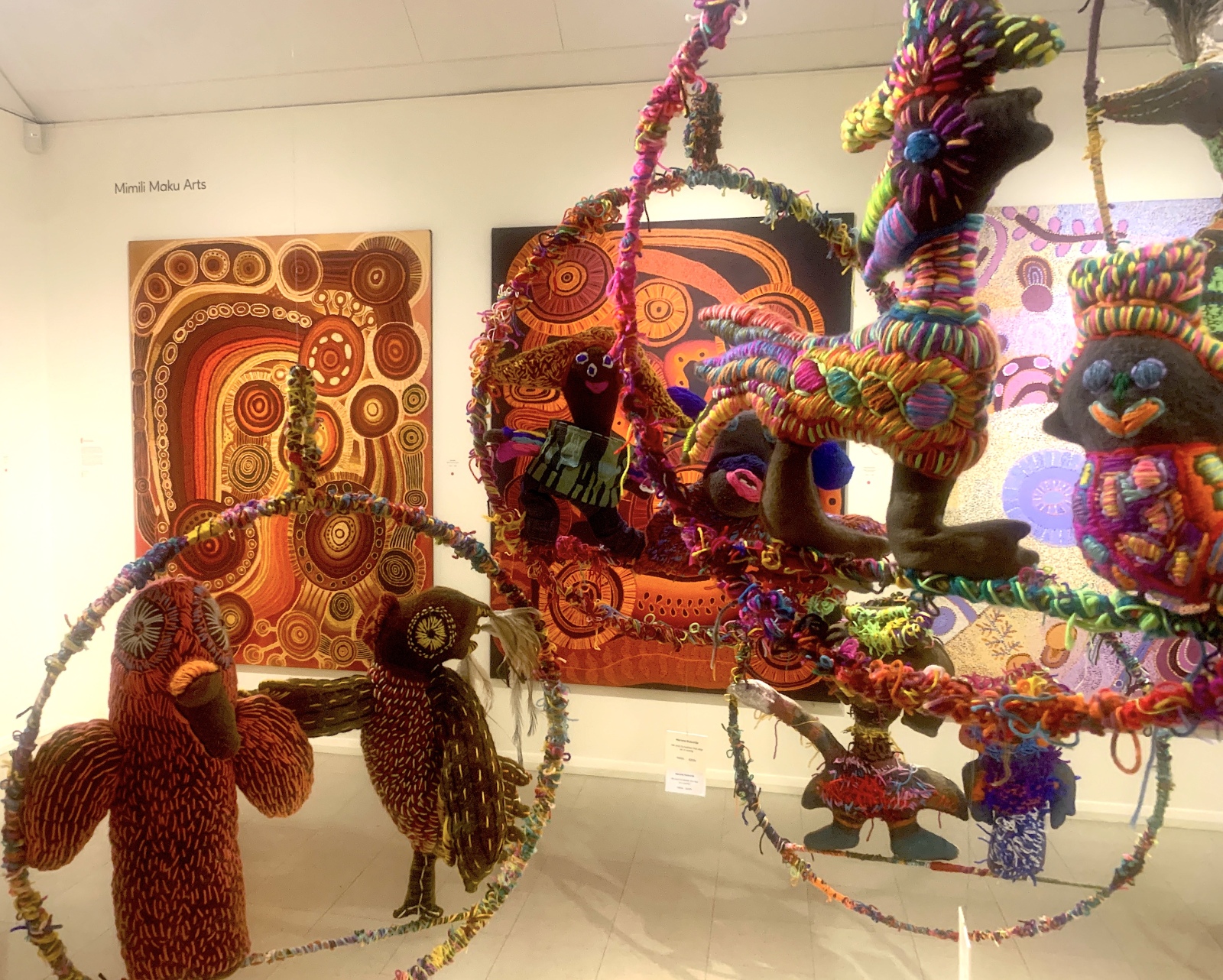
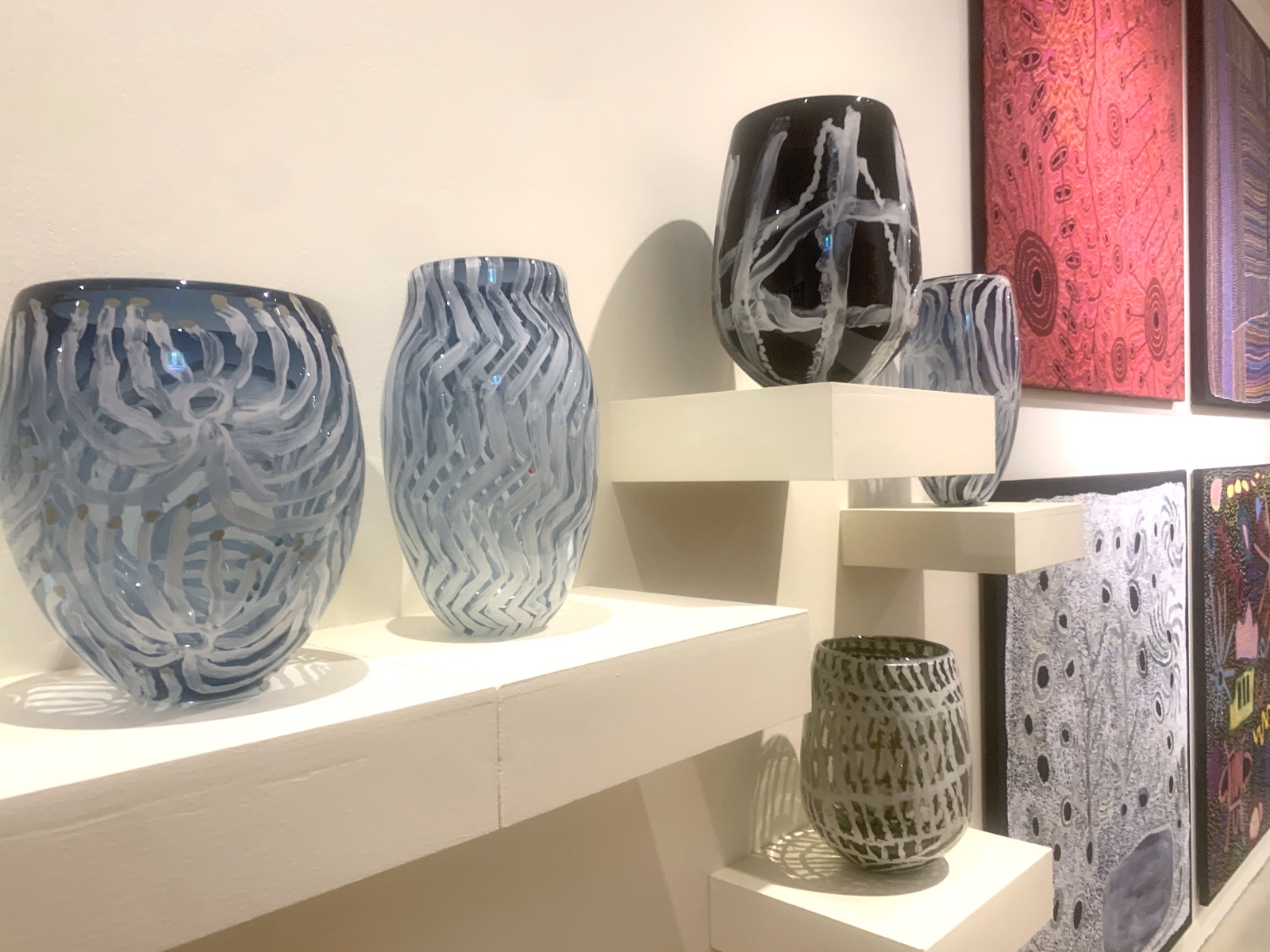
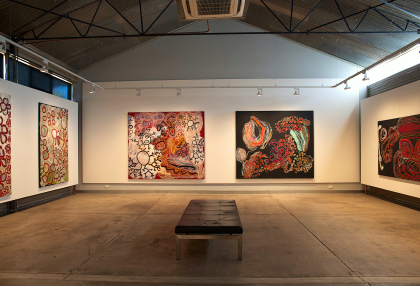
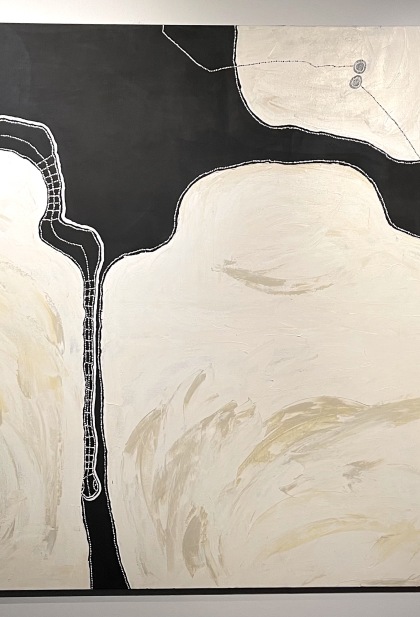
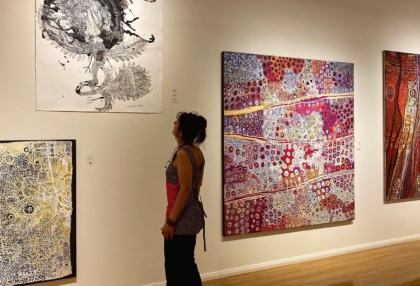
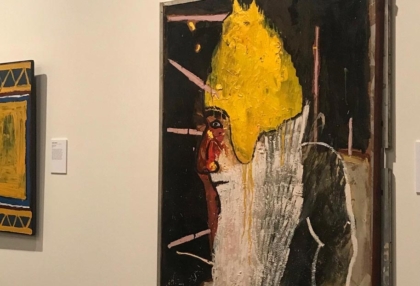
No Comments